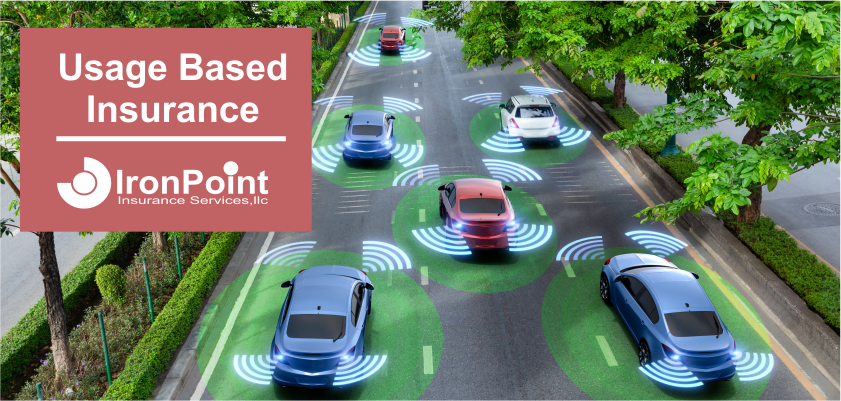Should I Buy a Usage Based Auto Insurance Policy?

Have you heard of usage-based auto insurance? If you haven’t, read on and you may pick up another reason to consider switching auto insurance. Usage-based insurance is the technical term, you likely know it by a brand name, like Snapshot by Progressive. Snapshot is one of the many commercially available usage-based auto insurance products on the market today.
So, if you’ve seen a Progressive Snapshot commercial, you’re now aware of usage-based insurance.
What is usage-based auto insurance?
Usage-based auto insurance is the latest product innovation by insurance companies to better align your driving behavior with the premiums they charge. This is beyond ways to earn simple auto insurance discounts.
Usage-based auto insurance uses telematics (in-vehicle telecommunications devices) to track mileage and driving behavior. These devices are very small and can be self-installed into your vehicle’s onboard diagnostics port (OBD II). Normally the device is installed for a short time, just long enough for the insurance company to accurately forecast your miles and assess how the vehicle is driven.
It’s actually a very simple, yet sophisticated way to get closer to capturing the real factors that determine driving risk. It’s also pretty easy to use.
What do these telematics devices measure?
The telematics devices used by insurance companies are designed to measure several different things, like miles driven, the time of day the vehicle is used, acceleration, braking, cornering, and in some cases airbag deployment. It really depends on the type of device the insurance company uses, and if it ties into your car’s computer or not.
Why do insurance companies like usage-based insurance?
Frankly, insurance companies will like anything that gives them a comparative advantage in pricing. Most believe that usage-based auto insurance is the future, so they’re all frantically working hard to not be last to develop a usage-based product. This is a bit cynical, but there is some truth to it.
Today, premiums are charged using data elements to model your actual driving capabilities. For instance, most auto insurance pricing includes things like age, gender, insurance score, prior insurance experience, and zip code, but these are merely proxy variables. They’re useful because it’s currently unknown exactly where you drive, how fast, how you break or corner, or the time of day you’re on the road. Knowing these things with precision would definitely provide an advantage to the insurance company that masters it first.
What are the advantages of usage-based auto insurance?
There are many advantages to usage-based auto insurance products, and they don’t just benefit the insurance company. Honestly, there are as many benefits for consumers, as well as insurance companies.
Aligning the actual driving experience with your premiums certainly helps get more accurate pricing, which is generally a benefit for the insurance company, but it also benefits the consumer. Usage-based auto insurance can provide benefits to consumers through lower rates for better driving. Currently, because of inaccuracies in pricing, safer drivers subsidize higher-risk drivers.
Making us better drivers
One huge benefit to consumers is access to their own driver data. Most usage-based auto insurance products come with consumer portals or mobile apps. The consumer is shown what is considered high-risk, or unsafe driving, and is provided a direct understanding of how to control their own auto insurance premiums. The utopian vision for these products is that the consumers ultimately modify driving behavior that proves costly, thus reducing traffic accidents, congestion, and vehicle emissions.
Usage-based auto insurance has its challenges
The cost of these devices has been a large obstacle to mass-marketing these programs, along with concerns over consumer privacy. The first challenge, however, is quickly changing. As these programs become more accepted, the costs of the devices are dropping, and the services to transfer data are more affordable.
In fact, there are already many companies that have developed smartphone applications that can determine drive signature and account for the differences between normal phone use, other motion, and what is drive experience. The use of smartphone apps will open up an entirely new, and cost-effective way to deploy these programs.
Consumer privacy remains an obstacle. Recent surveys, however, have concluded that more consumers would be willing to participate in a usage-based auto insurance program, suggesting that privacy concerns are being trumped by the potential to save money on auto insurance.
Privacy concerns, however, remain very real. The hope is that the consumer will come to realize the benefits of usage-based insurance prevail, and adoption of this new way of buying auto insurance will ultimately become the norm.
The bottom line
Usage-based auto insurance is certainly fashionable with insurance executives. The challenge is to convince the consumer. The rollout has been a bit soft as carriers try to find ways to introduce usage-based products without cannibalizing the existing ones.
What is uncertain is how a pricing innovation can truly change the market. If everyone switched is usage-based overnight, the pure-premium for losses would remain unchanged. The premiums that some pay would change, but the average premium would be the same. That’s a zero-sum game, and hard to see how it becomes the revolution many anticipate.
We are ready. In fact, we’ve updated our tips for buying auto insurance and why you should shop regularly posts. So, when the carriers decide to launch, we’ll be first in line to sell these products.

Compare Quotes Online
Want to know if you can save on home or auto insurance? See for yourself. Start a quote today.
Give us a Ring
1-877-334-7646
Call today and speak with a professional insurance agent.